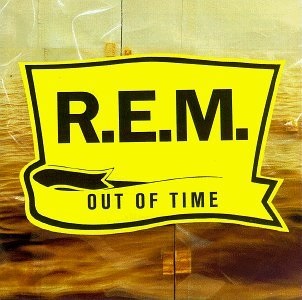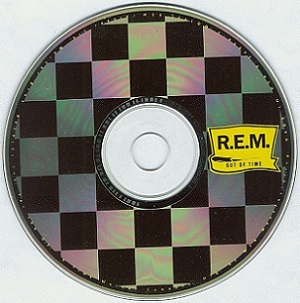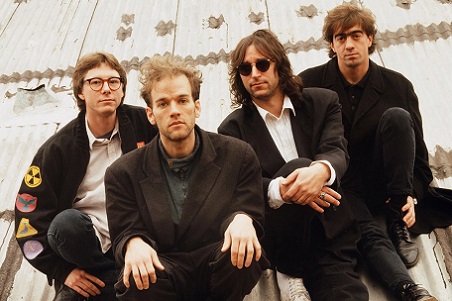Continuing with our year in review, Matt Lynn Digital invites you to look back at the last year in reviews of books, movies, music and television. We look at these with individual categories, one per day through Friday. Today we share music reviews offered by Matt Lynn Digital in 2021.

We looked into the Evanescence album The Open Door in September, marking an anniversary for the second studio album for the band. Amy Lee leads the vocals for Evanescence, looking into the connection Lee had with a former love interest as well as the fans of the band. The album looks further into early life experiences, loss and the finding of meaning through the course of life that the band explores with us through the experience.

The Recovering the Satellites album by Counting Crows responds to unexpected success and the adulation that, like with Evanescence in dealing with their debut album, offered some emotional feedback to the fanbase. The interpersonal for the Counting Crows and their lead singer and lyricist Adam Duritz, after acknowledging the fans appreciation, tends less with a romantic relationship lost than to an eagerness to connect on an individual level. Recovering the Satellites, like with The Open Door, seeks direction in the emotional realm.

The 1996 album Dust followed 1992’s Sweet Oblivion for Screaming Trees, a band that in my humble opinion deserves a higher level of acclaim than they physically achieved. The thematic references to biblical passages in speaking to contemplations of death. Whether the band was thinking of directing their aspirational reach personally, within the genre of grunge music they played, or the death of Kurt Cobain as with the song Dying Days, there is a gloom that pervades the album. That experience, in all its depth, feels like the point of the album Dust.

The Christmas Album of 1993 by David Foster featured songs performed with stars, including Vanessa Williams, Céline Dion, Natalie Cole and Wynonna Judd. The album’s mood combines secular and religious feeling with a respectful admiration for the season underpinning the songs offered.

A hit album of the grunge genre characteristic of the early 1990s is Pearl Jam‘s 1991 album Ten. Grunge was the style of the day, as was a confessional storytelling notion that included homelessness, divorce, remarriage, stepparents and emotional health concerns for school age kids. Coping with notions of bullying or scorn, the song Jeremy takes perhaps the harshest response to the trauma of any song on the album.

The post-punk, alternative sound of the band R.E.M. were permitted a spotlight with the album Out of Time in February of 2021. The composition and sequencing of the songs with Out of Time were artfully done to offer the careful listener a crafted argument against themes strictly of sex and violence. The album speaks to notions of self-defining depth in love, political awareness, relationships with parents and other intimates, and differing perspectives on pregnancy.

The debut album Licensed to Ill for Beastie Boys fused hip hop and hard rock when created in advanced of the album’s November of 1986 release. The incorporation of the hard rock influence with sampling conventions in hip hop made for a successful launching of a sounds that already existed separately, broadening an appeal for audiences that sensed they wanted a sound while waiting for the proper audio clues. Licensed to Ill would become the first #1 album that also was in the hip hop genre.

John Mellencamp offered a look into small town America with the 1985 album Scarecrow. The social concern that came through for Mellencamp with this album looked into taking advantage of farmers making a living on their land, modest living outside of steel mills, and the strong connection Mellencamp himself felt for the heartland of the United States.

Asia formed as a super band formed from parts of King Crimson, Emerson, Lake & Palmer, Yes and Buggles to create an album named after the new band itself, namely Asia. The interplay of Heat of the Moment and Only Time Will Tell in offering an apology for poor behavior and a realization of lost love announce a thematic direction for the 1982 album. The notion of love’s sting later drifts into questions of class in military service, feeling seen in professional and relationship pursuits, and finally growing through experience to see life more fully.

A calm, understated style greeted our ears with the 1971 album Mud Slide Slim and the Blue Horizon by James Taylor. You’ve Got a Friend remains a meaningful song for me from the album, with the song itself originally being written and recorded by Carole King. The song reflects on the practical quality nature of friendship, trust and the permission to be vulnerable in a safe space. This album resonates for me on these terms.

The album Aqualung by Jethro Tull was released in March of 1971. The album itself questions the orthodoxy of formal religion while maintaining a belief in God. Notions of justice are questioned through the music, as well as the role of humanity in the conduct of those purposes. The questions raised in this album are quite relevant to the human experience.

The Chick Corea album Now He Sings, Now He Sobs released in 1968. Matt Lynn Digital looked into this album shortly after Mr. Corea’s death in February of 2021. The album itself offers five songs of Jazz, which is the style of the pianist played in.
Matt Lynn Digital appreciates your continued interest in the content we offer. Should you have albums that you’d like us to review, or similar work to that mentioned above, please be sure to let us know.
Matt – Wednesday, December 29, 2021













